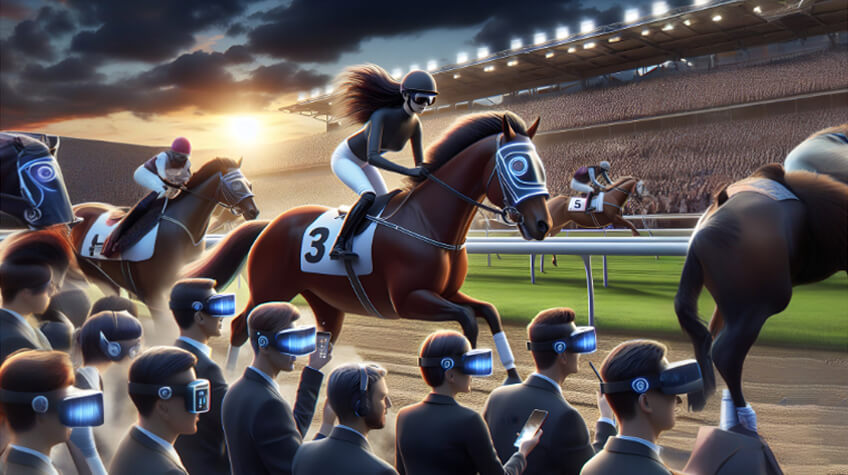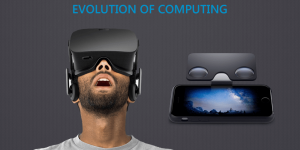
We are living in a world full of advancements. Technology has revolutionized every aspect of human life, including sport. Modern technologies have changed numerous games, including horse racing. This article gives insights into the impact of modern technology on horse racing in 2025.
So, without any further ado, let’s get started…
Horse racing is one of the oldest sports that is played worldwide. This game has been played since ancient times, making it one of the oldest sports. Earlier, the sport was reserved for royal and wealthy people. However, today, people from various backgrounds indulge in this game. Horse racing involves two or more horses competing against each other. All the horses are ridden by jockeys (a person that rides a horse in a horse race). The sport is mainly popular for horse racing betting, it isn’t really seen as much of a spectator sport for those who aren’t wagering on it.
Modern technology has revolutionized horse racing in a variety of ways, making the sport safer for all parties, including the horses. We are going to discuss the way technology has impacted this age-old game significantly. Here we go…
Most Significant Way In Which Technology Is Bringing About A Revolution In Horse Racing
Technology has benefited horse racing enormously. Horse racing has become safer, more competitive, and more exciting to watch, thanks to technological advancements.
Here are the top 9 ways technology is contributing to the revolutionization of the horse racing:
1. GPS Trackers and Motion Sensors
Advanced technologies such as GPS (Global Positioning System) trackers and motion sensors are being used to train horses for races. In addition, heart rate monitors and other advanced tools are used to monitor the health and performance of horses while they are being trained. This helps trainers to maintain proper workout regimens for horses and reduce the risk of injuries.
2. Big Data Analytics

Big data analytics are used to analyse a variety of aspects, including track conditions, weather, and historical performances. This helps companies involved in horse racing make more accurate predictions on the outcomes of contests. In addition, implementing data analytics gives them detailed information or data. Horse racing companies can utilize the data to make informed decisions about training, race strategy, and horse selection.
3. AR and VR
Modern technologies like Augmented Reality (AR) and Virtual Reality (VR) are being utilized to enhance viewers’ experience. Spectators are now able to have more immersive experiences because of the use of AR and VR in modern horse racing. AR and VR enable spectators to have a 360-degree view of the track. In addition, they can even experience races from the point of view of a jockey as well.
In addition, VR and AR help jockeys train for longer periods of time. Now, jockeys can employ wearable virtual reality technology and simulators to practice real-life race scenarios indoors in an extremely realistic environment. This eliminates the need for jockeys to train on horses that get exhausted due to over-training. This improves the performance of a jockey without placing either the horse or the jockey in danger. In addition, AR and VR devices help jockeys to train without worrying about the weather conditions.
4. Artificial Intelligence
The introduction of artificial intelligence (AI) has impacted not just people’s homes but also their hobbies. Yes, many people around the world are fond of horse racing. The use of Artificial Intelligence has made collecting data a breeze. The data that is gathered can be used to provide the most accurate predictions about racing. Experts now use AI-powered tools to provide more precise predictions and advice regarding races that spectators can use when betting.
5. Live Streaming Media
Gone are the days when you had to visit racecourses in order to watch horse racing. People now have the ability to watch it from the comfort of their places. The presence of live-streaming media has made horse racing more accessible to audiences all around the world. There are prolific live-streaming platforms that spectators can use to watch horse racing from the comfort of their place. Live streaming media has significantly increased both the viewership and engagement across the globe. People can watch races from any part of the world using their smartphones, tablets, or any other computing devices.
6. Drone Technology
Drone technology is now used in horse racing, providing users with more immersive experiences. Viewers can now get live aerial footage of races using drones. Drones that are used in horse racing capture high-quality footage of races. Also, they help identify infractions like jockeys leaning into their competitors or whipping their mounts. Not only does this footage help viewers with an improved viewing experience, but it also helps organizers disqualify jockeys and horses that fail to maintain fairness and competitiveness in races.
In addition, drones are used for live-streaming footage of races, allowing fans worldwide to enjoy races from the comfort of their place. In addition, drones are used to create horse racing videos that can be utilized to educate people about the world’s oldest and most famous game, i.e., horse racing.
7. Thermal Imaging Cameras
Thermal Imaging cameras are now used in horse racing to monitor both the horses’ health and performance. Veterinarians use these cameras to determine the heat signs of a horse with more precision. because of the development of sophisticated new thermal imaging cameras. This enables veterinarians to respond and address the situation much more quickly than ever before.
8. Cutting-edge Medical Devices
Horse racing companies have implemented MRI (Magnetic Resonance Imaging) equipment, scanners, endoscopes, and other cutting-edge medical devices thanks to technological advancements. This helps veterinarians to diagnose any wounds, injuries, or illnesses that the horses might have and address them quickly.
9. Changes in Regulation
Lastly, technology has helped state regulatory agencies and local authorities device regulations to guarantee fair play and the well-being of animals. Technology has helped agencies modify the rules concerning the use of performance-enhancing medications and the monitoring of horse health.
Putting it all together…
So, these are the various ways in which technology has impacted horse racing. Modern technology has made horse racing more competitive, accessible, and safer for both the horses and the jockeys. The sport is expected to become more secure and competitive as a result of further technological advancements. This is sure to make horse racing the most popular sport in the world in 2025 and beyond.






